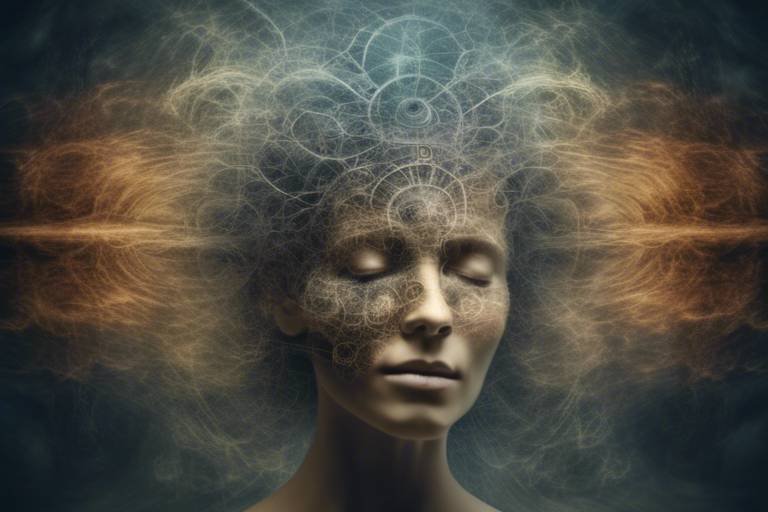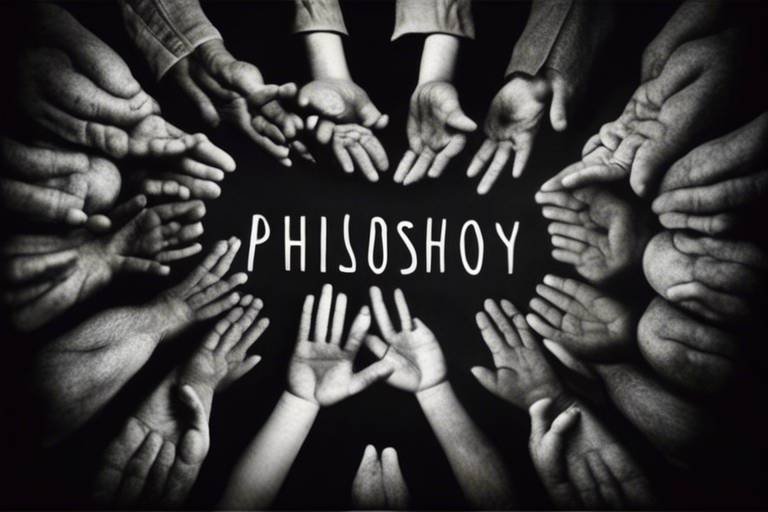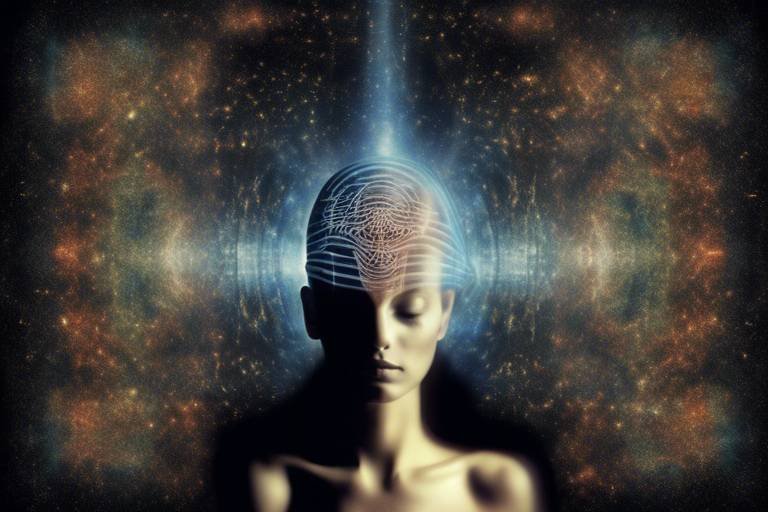Analyzing the Layers of Consciousness in Humans
Welcome to the fascinating world of human consciousness! Have you ever wondered what goes on in your mind when you daydream or get lost in thought? This article delves into the various layers of human consciousness, exploring their complexities and interconnections to better understand how they shape our thoughts, behaviors, and perceptions. Just like an onion, consciousness has layers, each revealing something unique about our mental processes. From the surface of our immediate awareness to the deeper recesses of our subconscious, each layer plays a vital role in defining who we are and how we interact with the world around us.
Understanding the basic structure of consciousness is essential for analyzing its layers. At its core, consciousness can be broken down into several key components: the conscious mind, the subconscious mind, and the collective consciousness. Each of these components interacts in intricate ways, influencing our thoughts, emotions, and actions. The conscious mind represents our immediate awareness, the thoughts and feelings we actively engage with. In contrast, the subconscious mind operates below the surface, storing memories and automatic responses that can influence our behavior without us even realizing it. Finally, the collective consciousness encompasses shared beliefs and ideas within a society, shaping cultural norms and social behavior. Together, these layers create a rich tapestry of human experience.
As we dive deeper into the layers of consciousness, we uncover varying levels of awareness within it. These levels range from basic sensory perception—like feeling the warmth of the sun on your skin—to higher-order cognitive functions, such as critical thinking and problem-solving. Each level of awareness plays a crucial role in our daily lives, influencing how we react to situations, make decisions, and interact with others. Think of it like a video game; as you progress, you unlock new skills and abilities that help you navigate the challenges ahead. The more aware you become of these levels, the better equipped you are to understand your own mind and the minds of those around you.
The subconscious mind plays a crucial role in shaping our thoughts and actions, often without our conscious awareness. It serves as a vast storage space for our memories, experiences, and learned behaviors. For instance, when you drive a car, your subconscious mind takes over many of the actions, allowing you to focus on other things, like listening to music or having a conversation. This part of the mind is also responsible for automatic responses to stimuli, such as flinching when something suddenly moves toward you. By examining the functions of the subconscious mind, we can gain insights into how it influences our daily lives, often in ways we might not even recognize.
The subconscious can significantly influence behavior without conscious awareness. For example, have you ever found yourself craving a particular food after seeing a commercial? This is your subconscious at work, linking a specific stimulus to an emotional response. Similarly, it can affect decision-making, leading us to choose one option over another based on past experiences stored in our subconscious. Understanding this influence can help us become more mindful of our choices and reactions, empowering us to make decisions that align with our true desires and values.
Various techniques, such as meditation and hypnosis, can help individuals access their subconscious. These methods provide a pathway to tap into this layer of consciousness for personal growth. Meditation, for instance, encourages a state of relaxation and heightened awareness, allowing us to explore our inner thoughts and feelings. Hypnosis, on the other hand, can facilitate a deeper connection to the subconscious, enabling individuals to uncover hidden memories or resolve emotional conflicts. By learning to access our subconscious mind, we can unlock a treasure trove of insights that can lead to profound personal transformation.
The concept of collective consciousness refers to shared beliefs and ideas within a society. This layer of consciousness influences cultural norms and social behavior, shaping how we interact with one another. Think about the values that are celebrated in your community—these are often a reflection of the collective consciousness at play. By understanding this layer, we can gain a better appreciation for the diverse perspectives that exist within our society and how they contribute to our overall human experience.
Altered states of consciousness, such as those induced by meditation or drugs, offer insights into the flexibility of human consciousness. These states can provide unique experiences that challenge our understanding of reality and perception. For instance, during meditation, individuals often report feelings of deep relaxation and heightened awareness, while psychoactive substances can dramatically alter perception and cognition. Exploring these altered states allows us to expand our understanding of consciousness and its potential.
Meditation is known to alter consciousness, promoting relaxation and heightened awareness. Regular meditation practice has been linked to numerous psychological and physiological benefits, including reduced stress, improved focus, and enhanced emotional well-being. By dedicating time to meditate, individuals can create a space for introspection and self-discovery, ultimately leading to a deeper understanding of themselves and their place in the world.
Psychoactive substances can dramatically alter perception and cognition, providing insights into the nature of consciousness. While some substances may offer therapeutic benefits, such as pain relief or alleviation of anxiety, they also come with potential risks. Understanding the effects of these substances on consciousness is crucial for making informed decisions about their use. It's essential to weigh the potential benefits against the risks, recognizing that our consciousness is a delicate balance that can be easily disrupted.
- What is consciousness? Consciousness refers to the state of being aware of and able to think about one's own existence, thoughts, and surroundings.
- How many layers of consciousness are there? While there are various models, consciousness is often described in layers such as the conscious mind, subconscious mind, and collective consciousness.
- Can we access our subconscious mind? Yes, techniques like meditation and hypnosis can help individuals tap into their subconscious for personal growth.
- What are altered states of consciousness? Altered states of consciousness are changes in awareness that can occur through various means, including meditation, sleep, or the use of psychoactive substances.

The Structure of Consciousness
Understanding the basic structure of consciousness is essential for analyzing its layers. Think of consciousness as a multi-layered cake, where each layer adds depth and flavor to our experience of reality. At its core, consciousness can be divided into several key components: the awareness of our surroundings, the thoughts that occupy our minds, and the emotions that color our perceptions. These elements interact seamlessly to create the rich tapestry of human experience.
The first layer, awareness, is our immediate perception of the world around us. It includes everything we can see, hear, touch, taste, and smell. This is the foundation upon which our conscious experience is built. Without awareness, we would be like a ship lost at sea, adrift and unaware of the currents that guide us. Our senses are constantly bombarded with information, and it’s our job to filter through this noise to focus on what’s important.
Next, we have the layer of thoughts. These are the internal dialogues and narratives that run through our minds. They can be fleeting, like a passing cloud, or persistent, like a catchy tune stuck on repeat. Our thoughts shape our beliefs and influence our behavior. For instance, if you constantly think you’re not good enough, that belief can manifest in various aspects of your life, affecting your confidence and decision-making.
Adding another dimension is the layer of emotions. Emotions are like the colors on an artist’s palette; they can enhance or overshadow our thoughts and awareness. A moment of joy can brighten our perception, while sadness can cast a shadow over our awareness. This interplay between thoughts and emotions is crucial, as it dictates how we respond to the world around us. For example, when we feel anxious, our awareness may narrow, making us hyper-focused on potential threats, while our thoughts may spiral into worst-case scenarios.
Furthermore, these layers are not isolated; they continuously interact with one another. For instance, a sudden loud noise can trigger an emotional response, which in turn influences our thoughts about the situation. This dynamic relationship creates a feedback loop that shapes our conscious experience. To illustrate this, consider the following table:
| Layer | Description | Example |
|---|---|---|
| Awareness | Perception of external stimuli | Noticing a dog barking |
| Thoughts | Internal dialogues and narratives | Thinking about what the dog might want |
| Emotions | Feelings that influence perception | Feeling anxious about the barking |
As we dive deeper into the structure of consciousness, we uncover additional layers, such as the subconscious and the collective consciousness. The subconscious mind operates beneath our immediate awareness, storing memories and experiences that can influence our thoughts and actions without us even realizing it. Meanwhile, the collective consciousness encompasses the shared beliefs and cultural norms that bind communities together, shaping our social behaviors and interactions.
In summary, the structure of consciousness is a complex interplay of awareness, thoughts, emotions, and deeper layers like the subconscious and collective consciousness. Each component plays a vital role in how we perceive and interact with the world, revealing the intricate web of connections that define our conscious experience. As we continue to explore these layers, we gain a better understanding of ourselves and the forces that drive our thoughts and actions.
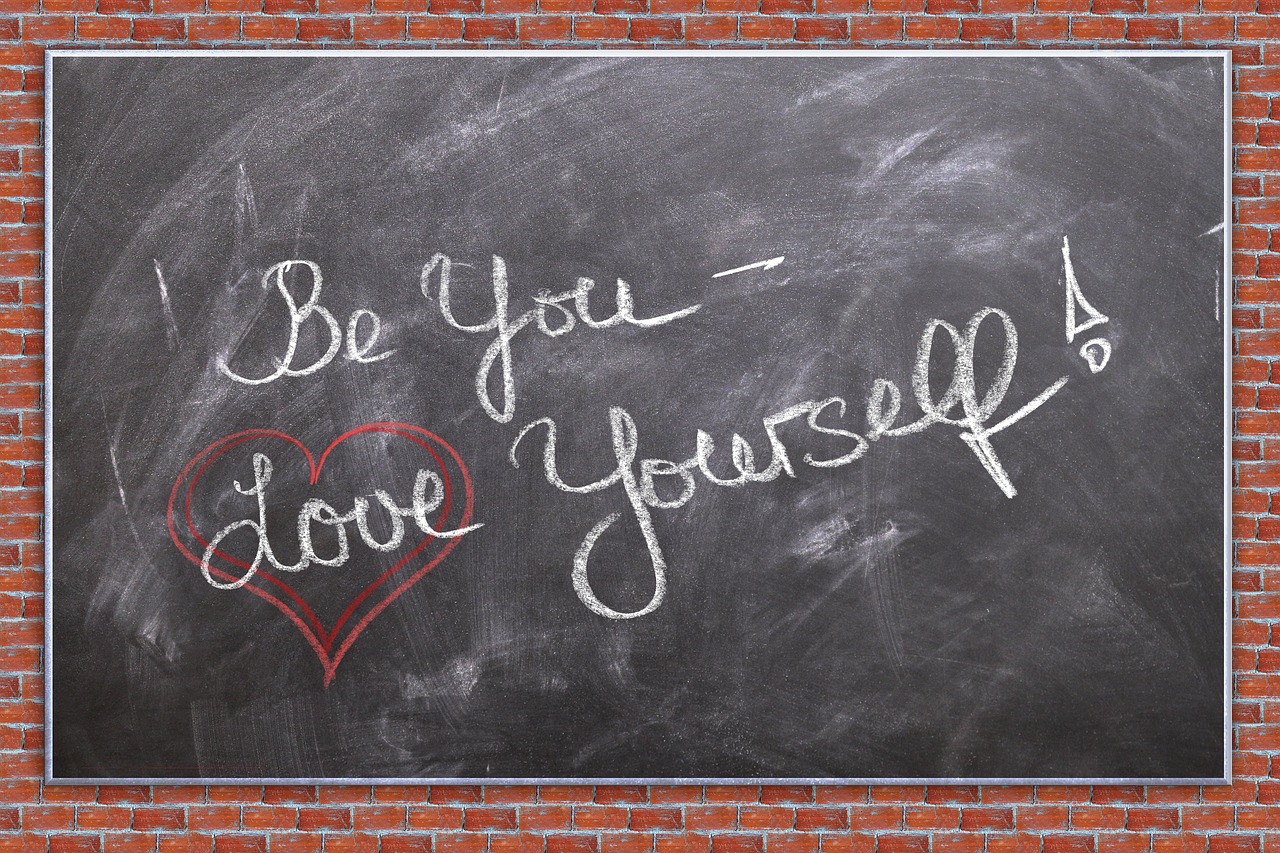
Levels of Awareness
When we talk about the within human consciousness, it's like peeling an onion—each layer reveals something new and profound. Our awareness can range from the most basic sensory perceptions to the intricate workings of our higher-order cognitive functions. Imagine waking up in the morning; the first thing you experience is the sound of your alarm clock. This is your basic sensory perception kicking in, alerting you to the world around you. But as you start to process this sound, your mind begins to engage in a more complex level of awareness, contemplating whether to hit the snooze button or to get up and start your day.
These varying levels of awareness play a crucial role in how we navigate our daily lives. They influence not only our thoughts but also our feelings and actions. For instance, when you’re deeply engrossed in a book, you might lose track of time and your surroundings. This state of focused attention is a higher level of awareness, where you are fully engaged with the material, almost as if you’ve entered a different world. On the other hand, if someone interrupts you during this moment, your awareness shifts back to the external environment, showcasing how fluid and dynamic our levels of awareness can be.
To better understand these levels, we can categorize them into three primary layers:
- Basic Awareness: This includes immediate sensory experiences like sights, sounds, and smells. It’s the foundation upon which all other levels are built.
- Reflective Awareness: At this level, we begin to think about our experiences. We analyze, interpret, and reflect on what we perceive, creating a deeper understanding of our thoughts and feelings.
- Meta-Awareness: This is the highest level, where we become aware of our own awareness. It’s like stepping outside of ourselves and observing our thoughts and emotions from a distance, allowing for greater self-regulation and emotional intelligence.
Each of these levels interacts with one another, creating a complex web of consciousness that influences our behavior and decision-making processes. For example, when faced with a challenging situation, your basic awareness might alert you to danger, while your reflective awareness helps you strategize a response. Finally, your meta-awareness allows you to consider how your emotions and thoughts may affect your decision, leading to a more balanced and informed choice.
Moreover, the interplay between these levels of awareness can be influenced by various factors such as stress, fatigue, and even our environment. For instance, when you’re stressed, your basic awareness might be heightened, focusing on immediate threats, while your reflective and meta-awareness could diminish, leading to impulsive decisions. Understanding these dynamics can empower us to cultivate a more mindful approach to life, enhancing our emotional resilience and overall well-being.
In conclusion, the levels of awareness are not just theoretical concepts; they are practical frameworks that help us understand our daily experiences. By recognizing where we are in this spectrum of awareness, we can better navigate our thoughts, emotions, and actions, leading to a more fulfilling and conscious life.

Subconscious Mind
The is often described as the hidden powerhouse of our mental processes, operating just beneath the surface of our conscious awareness. It’s like the backstage crew of a theater production, working tirelessly to ensure that everything runs smoothly while the audience remains oblivious to the intricate details behind the scenes. This layer of consciousness is responsible for storing vast amounts of information, memories, and experiences, which can significantly influence our thoughts, behaviors, and reactions without us even realizing it.
One of the most fascinating aspects of the subconscious mind is its ability to process information at an astonishing speed. Imagine your brain as a high-performance computer, where the subconscious acts as the operating system, managing background tasks while the conscious mind focuses on immediate concerns. It handles everything from basic motor skills to complex emotional responses, seamlessly integrating past experiences into our present actions. For instance, when you suddenly feel anxious in a situation that reminds you of a past trauma, it's your subconscious mind at work, triggering that emotional response based on stored memories.
Moreover, the subconscious mind plays a crucial role in shaping our automatic responses to various stimuli. Think about driving a car: at first, you consciously focus on every action, but over time, it becomes second nature. This transition from conscious effort to subconscious automation illustrates how deeply ingrained patterns can emerge from repeated behaviors. Our subconscious essentially acts as a repository of learned behaviors, habits, and beliefs, which can be both beneficial and detrimental. For example, positive affirmations can foster self-confidence, while negative self-talk can lead to self-doubt and anxiety.
To delve deeper into the functions of the subconscious mind, let’s explore some of its key roles:
- Memory Storage: The subconscious mind retains experiences and information that may not be immediately accessible to our conscious thought. These memories can influence our decisions and perceptions in subtle ways.
- Emotional Responses: It governs our emotional reactions based on past experiences. For instance, a certain smell might evoke a memory of childhood, triggering a wave of nostalgia.
- Pattern Recognition: The subconscious mind excels at identifying patterns and making connections, often guiding us toward intuitive decisions.
Understanding the power of the subconscious mind opens up avenues for personal growth and self-discovery. By tapping into this layer of consciousness, individuals can uncover hidden motivations and reshape their thought processes. Techniques such as meditation, hypnosis, and even journaling can facilitate access to the subconscious, allowing one to explore its depths and harness its potential. Imagine diving into a vast ocean where each wave represents a different thought or memory, waiting to be explored. The journey into the subconscious can be both enlightening and transformative, offering insights that can lead to profound changes in one's life.
In conclusion, the subconscious mind is a remarkable aspect of human consciousness that influences our daily lives in ways we often overlook. By acknowledging its presence and learning to engage with it, we can unlock the secrets it holds, paving the way for greater self-awareness and personal development.
- What is the subconscious mind? The subconscious mind is the part of our consciousness that stores memories, experiences, and automatic responses, influencing our thoughts and behaviors without our conscious awareness.
- How does the subconscious mind affect behavior? It shapes our reactions and decisions based on past experiences, often guiding us toward familiar patterns of behavior.
- Can I access my subconscious mind? Yes, techniques like meditation, hypnosis, and journaling can help you tap into your subconscious mind for personal growth.
- What are some techniques to influence my subconscious mind? Positive affirmations, visualization, and mindfulness practices can help reshape your subconscious beliefs and behaviors.
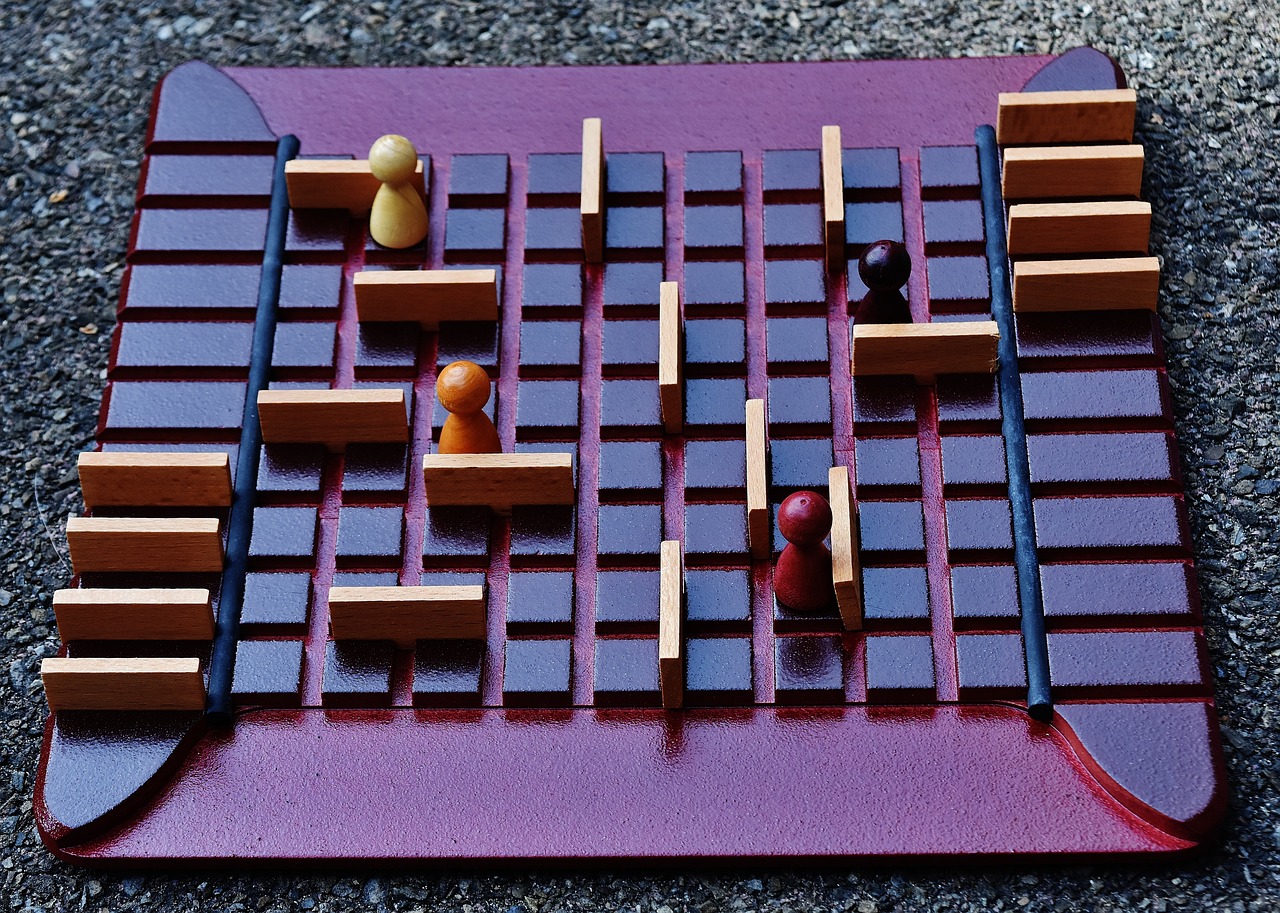
Influence of the Subconscious
The subconscious mind is like a vast ocean just beneath the surface of our conscious thoughts. It holds a treasure trove of memories, experiences, and emotions that shape our behavior in ways we often don't realize. Imagine trying to navigate a ship through fog; you can see only a little ahead, but the hidden currents and depths affect your journey profoundly. This is how the subconscious influences our daily lives, guiding our decisions and reactions without us even being aware of it.
One of the most fascinating aspects of the subconscious is its ability to process information at lightning speed. While our conscious mind can only handle a limited amount of information at once, the subconscious can absorb countless details simultaneously. For instance, have you ever driven a familiar route and suddenly realized you weren't consciously aware of the last few minutes? That's your subconscious at work, managing tasks while your conscious mind wanders. This ability can lead to automatic responses to stimuli, where we react based on past experiences rather than conscious thought.
Consider this: when you hear a particular song, it might evoke strong emotions or memories from your past. This reaction is rooted in your subconscious, where those associations are stored. Our subconscious acts as a library of our life experiences, influencing our emotions and behaviors. It can even dictate how we perceive new situations based on how similar they are to past experiences. For example, if someone had a negative experience with a dog in childhood, they might feel anxious or fearful around dogs later in life, even if the current dog poses no threat.
Furthermore, the subconscious plays a significant role in decision-making. Often, we make choices based on gut feelings rather than logical reasoning. This instinctual response is a product of our subconscious mind, which has been shaped by our experiences, beliefs, and emotions. When we encounter a situation, our subconscious quickly analyzes it, drawing from our past to guide our present behavior. This process can be beneficial, as it allows us to make quick decisions in familiar situations, but it can also lead to biases and irrational fears that we might not fully understand.
To illustrate this influence, consider the following examples of subconscious impact:
- Emotional Triggers: Certain smells or sounds can trigger emotions tied to past experiences, affecting our mood and behavior.
- Habits: Many of our daily habits are formed and reinforced by the subconscious, making them hard to break.
- Social Interactions: Our subconscious beliefs about ourselves and others can shape how we interact socially, often leading to patterns in relationships.
Understanding the influence of the subconscious can empower us to make more informed choices. By recognizing its role in our lives, we can begin to explore techniques to access and reprogram this layer of consciousness. Whether it's through therapy, mindfulness, or self-reflection, tapping into the subconscious can lead to profound personal growth and transformation. The journey into the depths of our minds can be both enlightening and liberating, allowing us to break free from the unseen chains that bind us.
- What is the subconscious mind? The subconscious mind is the part of our mind that stores memories, emotions, and experiences, influencing our thoughts and behaviors without our conscious awareness.
- How does the subconscious influence behavior? It influences behavior through automatic responses, emotional triggers, and ingrained habits formed from past experiences.
- Can I change my subconscious beliefs? Yes! Techniques like meditation, therapy, and positive affirmations can help reprogram subconscious beliefs.
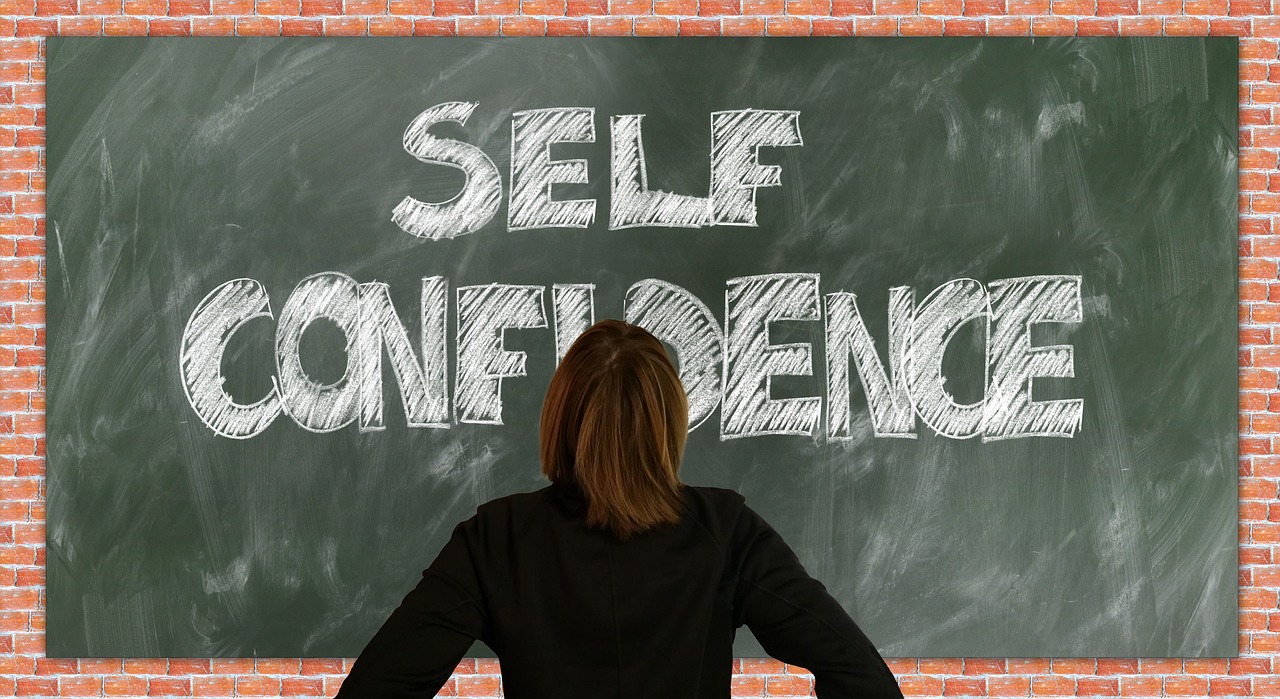
Accessing the Subconscious
Accessing the subconscious mind can feel like opening a treasure chest filled with insights and hidden gems about ourselves. Imagine diving deep into a vast ocean where the surface is calm, but beneath lies a world teeming with life and mystery. This is akin to exploring our subconscious, a realm that holds our memories, beliefs, and automatic responses. Various techniques can help us tap into this layer of consciousness, allowing us to unlock our potential and gain a deeper understanding of our thoughts and behaviors.
One of the most popular methods for accessing the subconscious is through meditation. This practice encourages a state of relaxation and heightened awareness, providing a gateway to explore our inner thoughts. During meditation, individuals often find that their minds wander, revealing thoughts and feelings that they may not have been consciously aware of. By creating a space for stillness, we can observe these thoughts without judgment, allowing us to understand and integrate them into our conscious experience.
Another effective technique is hypnosis. Often misunderstood, hypnosis is not about control but rather about guiding the individual into a focused state of awareness where they can explore their subconscious. A trained professional can help facilitate this journey, allowing the person to access memories or feelings that may have been buried. This can be particularly beneficial for addressing issues such as anxiety, phobias, or past traumas. The process can feel like peeling an onion, where each layer reveals something new and often enlightening.
Additionally, practices such as journaling can serve as a bridge to the subconscious. When we write freely, without censoring our thoughts, we often uncover insights that reveal our true feelings and desires. It’s like having a conversation with ourselves, where the pen becomes a tool for exploration. The act of writing can help clarify our thoughts and bring subconscious beliefs to the forefront, making them easier to address and understand.
To summarize, accessing the subconscious is an enriching journey that can lead to personal growth and self-discovery. Here are a few techniques to consider:
- Meditation: A practice that fosters relaxation and awareness.
- Hypnosis: A guided experience to explore deeper memories and feelings.
- Journaling: Writing freely to uncover hidden thoughts and emotions.
By employing these techniques, we can begin to unravel the complexities of our subconscious, leading to a more profound understanding of ourselves and how we navigate the world around us. The journey into our subconscious is not just about understanding our past; it's about shaping our future, empowering us to make more conscious choices and live authentically.
1. What is the subconscious mind?
The subconscious mind is a part of our consciousness that stores memories, beliefs, and automatic responses. It influences our thoughts and behaviors without us being consciously aware of it.
2. How can I access my subconscious mind?
You can access your subconscious through techniques such as meditation, hypnosis, and journaling. These practices help you explore your inner thoughts and feelings.
3. Is hypnosis safe?
Yes, hypnosis is generally safe when conducted by a trained professional. It is a guided process that allows individuals to explore their subconscious mind in a controlled environment.
4. Can accessing the subconscious help with personal growth?
Absolutely! By understanding your subconscious beliefs and patterns, you can make more informed choices and promote personal growth.

Collective Consciousness
The concept of is a fascinating aspect of human psychology that dives deep into the shared beliefs, values, and ideas that bind individuals within a society. Imagine it as an invisible web that connects us all, influencing our behaviors and perceptions without us even realizing it. This shared consciousness shapes our cultural norms and social behaviors, acting as the glue that holds communities together. But how does this phenomenon work, and why is it so significant?
At its core, collective consciousness is the sum of our individual consciousnesses, creating a larger, communal understanding of the world. Think of it as a massive, ever-evolving tapestry, where each thread represents an individual’s thoughts and experiences. When woven together, these threads form patterns that reflect the values and beliefs of a society. These patterns can be seen in various aspects of life, from art and literature to social norms and laws.
One of the most intriguing aspects of collective consciousness is how it evolves over time. As societies change, so does the collective consciousness. For instance, consider the shifts in attitudes toward topics like gender equality or environmental sustainability. These changes often stem from a gradual awakening within the collective consciousness, leading to movements that challenge the status quo. This evolution can be influenced by several factors, including:
- Technological advancements
- Globalization and cultural exchange
- Social movements and activism
- Education and awareness campaigns
Moreover, collective consciousness can also manifest in more subtle ways, such as through social media and the internet. In today’s digital age, information spreads like wildfire, allowing ideas to permeate different cultures and societies almost instantaneously. This interconnectedness can lead to a more unified global consciousness, where people from diverse backgrounds come together to address common issues, such as climate change or social justice.
However, it’s essential to recognize that while collective consciousness can promote unity and shared understanding, it can also lead to conformity and the suppression of individual thought. When the prevailing beliefs of a society become too dominant, they can overshadow personal opinions and experiences, making it challenging for individuals to express dissenting views. This dynamic raises important questions about the balance between collective identity and personal autonomy.
In conclusion, collective consciousness is a powerful force that shapes our social interactions and cultural norms. By understanding its complexities, we can better appreciate how our individual thoughts and experiences contribute to the larger societal fabric. As we navigate the challenges of modern life, recognizing the influence of collective consciousness can empower us to engage more meaningfully with our communities and advocate for positive change.
- What is collective consciousness?
Collective consciousness refers to the shared beliefs, ideas, and values that exist within a society, influencing individual behaviors and perceptions. - How does collective consciousness evolve?
It evolves through various factors, including technological advancements, social movements, and cultural exchanges that reshape societal norms and values. - Can collective consciousness suppress individual thought?
Yes, dominant beliefs within a collective consciousness can overshadow personal opinions, making it difficult for individuals to express dissenting views.

Altered States of Consciousness
When we think about consciousness, we often envision a steady stream of thoughts and feelings flowing through our minds. However, the reality is that consciousness is far more dynamic and can shift dramatically based on various factors. refer to any state of awareness that differs significantly from our normal waking state. These states can be induced through a variety of methods, including meditation, sensory deprivation, sleep, and the use of psychoactive substances. Each method opens a door to a different realm of perception, often leading to profound insights and experiences that can reshape our understanding of reality.
One of the most fascinating aspects of altered states is their ability to expand our awareness beyond the usual confines of our consciousness. For instance, during meditation, many individuals report experiences of deep relaxation and heightened awareness, where thoughts seem to float by like clouds in the sky. This state can lead to a sense of unity with the universe, a feeling that transcends individual existence. On the other hand, psychoactive substances can induce a wide range of experiences, from euphoric highs to intense paranoia, depending on the substance and the individual’s mental state. Understanding these experiences can help us appreciate the complexities of the human mind.
Let’s take a closer look at two primary methods that induce altered states: meditation and psychoactive substances. Each has its own unique effects and implications on consciousness:
| Method | Effects on Consciousness | Potential Benefits | Risks |
|---|---|---|---|
| Meditation | Increased mindfulness, relaxation, altered perception of time | Stress reduction, improved focus, emotional well-being | Initial discomfort, difficulty in maintaining practice |
| Psychoactive Substances | Altered sensory perception, changes in thought processes | Potential therapeutic benefits, enhanced creativity | Risk of addiction, mental health issues, legal consequences |
As we can see from the table above, both meditation and the use of psychoactive substances can lead to altered states of consciousness, but they come with different sets of effects and risks. Meditation is generally viewed as a safe and beneficial practice that encourages mental clarity and emotional stability. In contrast, while psychoactive substances may offer therapeutic benefits, they also pose significant risks that can affect mental health and overall well-being.
Ultimately, exploring altered states of consciousness is like embarking on an adventurous journey through the mind. Each experience can teach us something new, revealing hidden aspects of our psyche. Whether through the stillness of meditation or the unpredictable nature of substances, these states invite us to question what we know about ourselves and the world around us. They challenge our perceptions and expand our understanding of consciousness, reminding us that there is so much more to explore beneath the surface of our everyday experiences.
- What are altered states of consciousness? Altered states of consciousness are any states of awareness that differ from normal waking consciousness, often induced by meditation, drugs, or other methods.
- How does meditation affect consciousness? Meditation promotes relaxation and mindfulness, often leading to heightened awareness and a sense of unity with the universe.
- Are psychoactive substances safe to use? While some may offer therapeutic benefits, they carry risks such as addiction and mental health issues, and should be approached with caution.
- Can altered states of consciousness lead to personal growth? Yes, many people report personal insights and growth from experiences in altered states, whether through meditation or other means.

Effects of Meditation
Meditation is more than just a trendy practice; it's a powerful tool that can profoundly transform our consciousness and overall well-being. Imagine stepping into a serene oasis, where the noise of the outside world fades away, and you can connect with your inner self. This is what meditation offers—a chance to explore the depths of your mind and experience a plethora of benefits that extend beyond mere relaxation.
One of the most significant is its ability to reduce stress. In our fast-paced lives, stress can feel like an unwelcome companion, constantly nagging at our thoughts and emotions. However, studies have shown that regular meditation practice can lower levels of the stress hormone cortisol. This reduction not only helps in calming the mind but also contributes to better physical health, as chronic stress is linked to various ailments such as heart disease and weakened immune function.
Moreover, meditation enhances focus and concentration. In a world filled with distractions, maintaining attention can be a challenge. But meditation trains the brain to remain present and engaged. When you sit down to meditate, you're essentially doing mental push-ups, strengthening your ability to concentrate on tasks. Research indicates that just a few minutes of meditation daily can lead to improved attention spans and cognitive performance, making you more efficient in your daily activities.
Another fascinating aspect of meditation is its impact on emotional well-being. Through practices like mindfulness meditation, individuals can cultivate a greater awareness of their thoughts and feelings. This awareness fosters emotional regulation, allowing people to respond to situations more thoughtfully rather than reacting impulsively. For instance, when faced with a stressful situation, a person who meditates regularly might take a moment to breathe and assess their emotions, leading to healthier responses.
Additionally, meditation has been linked to increased self-awareness. It encourages introspection and self-exploration, allowing individuals to understand their motivations and desires better. As you dive deeper into your thoughts during meditation, you may uncover patterns in your behavior that you weren't previously aware of. This newfound self-awareness can lead to personal growth and a more fulfilling life.
To illustrate the effects of meditation, here’s a simple table summarizing some key benefits:
| Benefit | Description |
|---|---|
| Stress Reduction | Lowers cortisol levels, promoting relaxation and reducing anxiety. |
| Enhanced Focus | Improves attention span and cognitive performance. |
| Emotional Regulation | Encourages thoughtful responses to emotional situations. |
| Increased Self-Awareness | Helps individuals understand their thoughts and behaviors better. |
However, it's essential to remember that meditation is not a one-size-fits-all solution. Different techniques resonate with different individuals. Some may find solace in guided meditations, while others prefer silent or mantra-based practices. The key is to explore various methods and discover what works best for you. Just like finding the right exercise routine, meditation requires patience and practice to reap its full benefits.
In conclusion, the effects of meditation are profound and multifaceted. It’s a journey into the self that not only calms the mind but also enhances focus, emotional health, and self-awareness. So, why not take a moment today to sit quietly, breathe deeply, and embark on this transformative path? Your mind and body will thank you for it.
- How long should I meditate for? Start with just 5-10 minutes a day and gradually increase the duration as you become more comfortable with the practice.
- Do I need to sit cross-legged to meditate? No, you can meditate in any comfortable position, whether sitting on a chair, lying down, or even walking.
- Can meditation help with anxiety? Yes, many studies suggest that meditation can significantly reduce anxiety levels and promote a sense of calm.
- Is it normal for my mind to wander while meditating? Absolutely! It’s perfectly normal. The key is to gently bring your focus back to your breath or mantra.
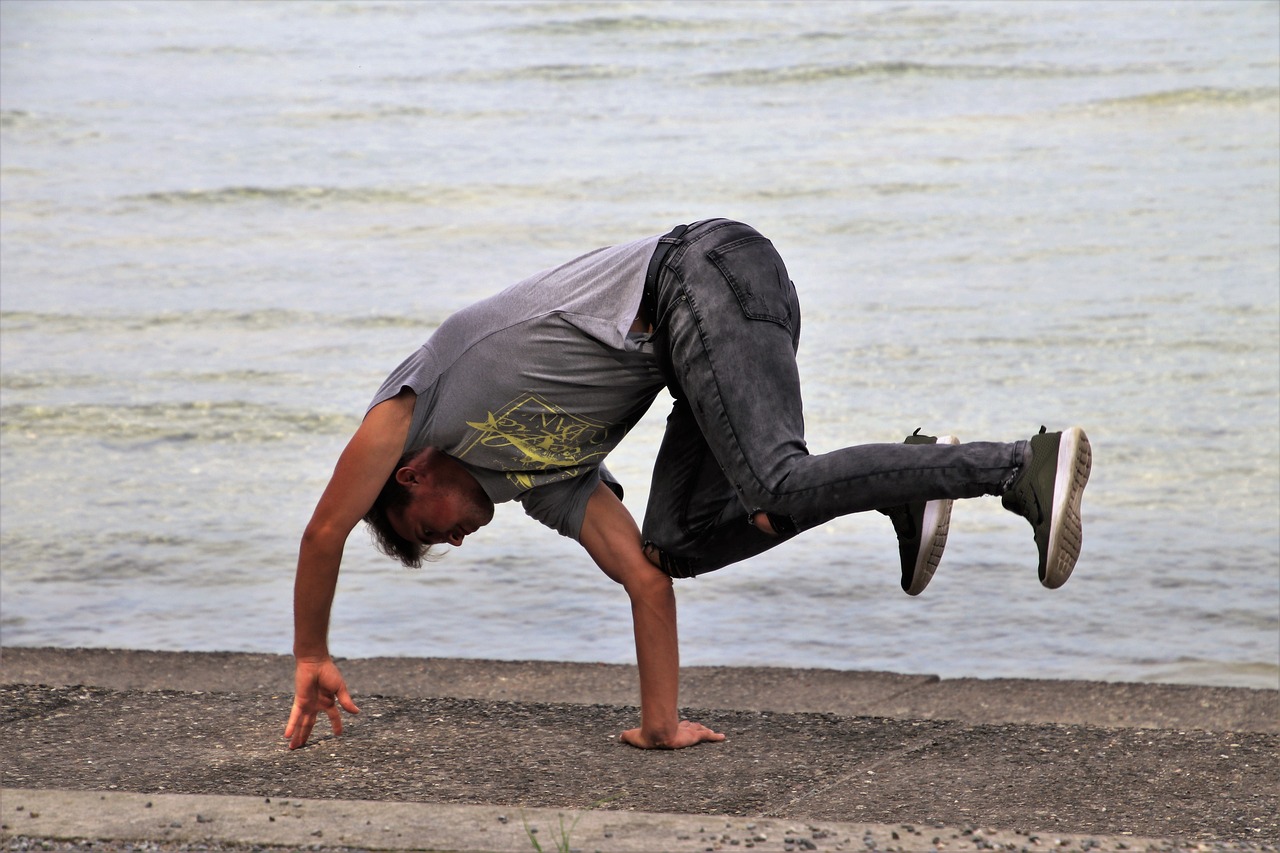
Impact of Psychoactive Substances
Psychoactive substances have a profound impact on human consciousness, often acting as a double-edged sword. On one hand, they can enhance experiences, alter perceptions, and even facilitate profound insights into the nature of reality. On the other hand, their use can lead to a myriad of risks, from addiction to altered mental states that may not be easily reversible. It's like stepping into a roller coaster—thrilling, yet unpredictable.
When we consume these substances, whether they are natural like cannabis or synthetic like LSD, they interact with our brain's neurotransmitters. This interaction can lead to significant changes in mood, perception, and cognition. For instance, drugs such as psilocybin, found in magic mushrooms, can induce altered states of consciousness that allow users to experience a sense of unity with the universe or profound insights about their lives. However, these experiences can also lead to anxiety or paranoia, especially in those who are unprepared for such intense shifts in perception.
To better understand the impact of psychoactive substances, let's take a look at some common categories of these substances and their effects:
| Substance Type | Common Examples | Effects on Consciousness |
|---|---|---|
| Stimulants | Caffeine, Cocaine | Increased energy, heightened alertness, potential anxiety |
| Depressants | Alcohol, Benzodiazepines | Relaxation, sedation, impaired judgment |
| Hallucinogens | LSD, Psilocybin | Altered perceptions, visual/auditory hallucinations, introspective insights |
| Opioids | Morphine, Heroin | Intense euphoria, pain relief, high potential for addiction |
While the allure of these substances can be strong, it’s crucial to approach them with caution. Many users may find themselves drawn to the temporary escape or heightened experiences they offer, but the long-term consequences can be severe. Addiction, cognitive decline, and emotional instability are just a few potential outcomes of excessive use. It's essential to recognize that not everyone will respond to psychoactive substances in the same way; individual differences in biology, mental health, and personal circumstances play a significant role in how these substances affect consciousness.
Moreover, the legal status of many psychoactive substances adds another layer of complexity. While some are celebrated for their therapeutic potential, such as the use of MDMA in treating PTSD, others are stigmatized and illegal. This inconsistency can lead to misinformation and fear, further complicating the discourse surrounding their use. Understanding the science behind these substances and their effects on consciousness is vital for informed decision-making.
In conclusion, the impact of psychoactive substances on consciousness is a multifaceted issue. While they can provide extraordinary experiences and insights, they come with risks that must be carefully weighed. As we continue to explore the depths of human consciousness, it is imperative to approach these substances with knowledge, respect, and caution.
- What are psychoactive substances? - These are chemicals that affect the brain and alter mood, perception, or behavior.
- Are all psychoactive substances harmful? - Not necessarily; some can be used safely in controlled environments, while others pose significant risks.
- Can psychoactive substances be used therapeutically? - Yes, certain substances have shown promise in treating various mental health conditions when used responsibly.
- How do I know if a substance is safe to use? - Research and consult healthcare professionals to understand the risks and benefits associated with any substance.
Frequently Asked Questions
- What are the layers of human consciousness?
The layers of human consciousness include the conscious mind, subconscious mind, and collective consciousness. Each layer plays a unique role in shaping our thoughts, behaviors, and perceptions. The conscious mind is responsible for our immediate awareness, while the subconscious mind influences our automatic responses and memories. Collective consciousness refers to the shared beliefs and values within a society that impact social behavior.
- How does the subconscious mind affect our daily lives?
The subconscious mind significantly influences our behavior without us even realizing it. It stores memories and experiences, which can impact our decisions and emotional responses. For instance, you might feel anxious in a situation that reminds you of a past negative experience, even if you aren't consciously aware of that memory. This hidden influence can shape our daily interactions and choices in profound ways.
- Can we access our subconscious mind?
Yes! There are various techniques to access the subconscious mind, such as meditation, hypnosis, and visualization. These methods can help individuals tap into their deeper thoughts and feelings, promoting personal growth and self-awareness. By quieting the conscious mind, you can explore the underlying beliefs and emotions that guide your behavior.
- What is collective consciousness?
Collective consciousness refers to the set of shared beliefs, ideas, and moral attitudes that operate as a unifying force within a society. It shapes cultural norms and influences social behavior, making it essential for understanding how groups function. This concept suggests that individuals are not isolated in their thoughts but are part of a larger social fabric that impacts their perceptions and actions.
- What are altered states of consciousness?
Altered states of consciousness are mental states that differ significantly from the normal waking state. These can be induced through various means, such as meditation, sleep, or the use of psychoactive substances. In these states, individuals may experience heightened awareness, changes in perception, or even profound insights. Understanding these states can provide valuable insights into the flexibility and capabilities of human consciousness.
- How does meditation affect consciousness?
Meditation can profoundly alter consciousness by promoting relaxation and heightened awareness. Regular practice has been shown to reduce stress, improve focus, and enhance emotional well-being. During meditation, individuals often experience a shift in their perception of time and self, leading to greater insights and a sense of connection to the world around them.
- What are the effects of psychoactive substances on consciousness?
Psychoactive substances can dramatically alter perception, mood, and cognition. They can lead to experiences that range from enhanced creativity and euphoria to confusion and anxiety. While some substances may offer therapeutic benefits, such as in controlled settings, they also come with risks, including addiction and negative psychological effects. It's crucial to approach their use with caution and awareness.












